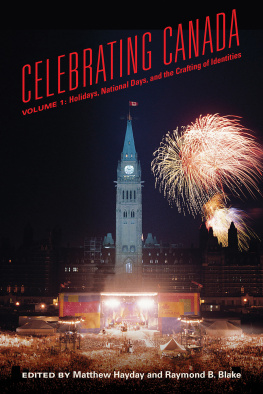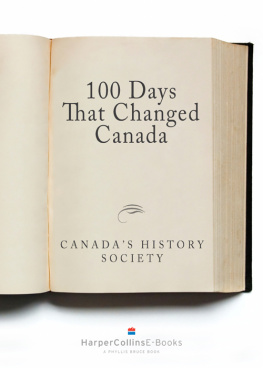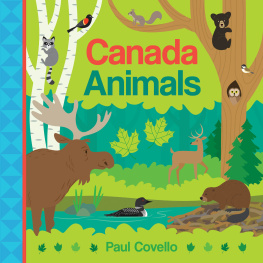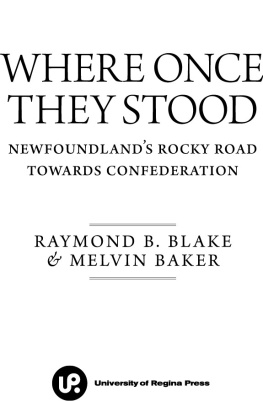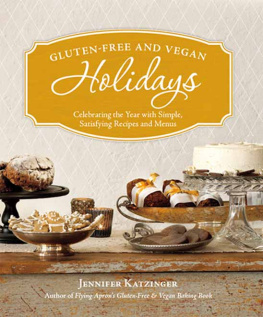Mathew Hayday - Celebrating Canada: Holidays, National Days, and the Crafting of Identities
Here you can read online Mathew Hayday - Celebrating Canada: Holidays, National Days, and the Crafting of Identities full text of the book (entire story) in english for free. Download pdf and epub, get meaning, cover and reviews about this ebook. year: 2017, publisher: University of Toronto Press, genre: Politics. Description of the work, (preface) as well as reviews are available. Best literature library LitArk.com created for fans of good reading and offers a wide selection of genres:
Romance novel
Science fiction
Adventure
Detective
Science
History
Home and family
Prose
Art
Politics
Computer
Non-fiction
Religion
Business
Children
Humor
Choose a favorite category and find really read worthwhile books. Enjoy immersion in the world of imagination, feel the emotions of the characters or learn something new for yourself, make an fascinating discovery.
- Book:Celebrating Canada: Holidays, National Days, and the Crafting of Identities
- Author:
- Publisher:University of Toronto Press
- Genre:
- Year:2017
- Rating:3 / 5
- Favourites:Add to favourites
- Your mark:
- 60
- 1
- 2
- 3
- 4
- 5
Celebrating Canada: Holidays, National Days, and the Crafting of Identities: summary, description and annotation
We offer to read an annotation, description, summary or preface (depends on what the author of the book "Celebrating Canada: Holidays, National Days, and the Crafting of Identities" wrote himself). If you haven't found the necessary information about the book — write in the comments, we will try to find it.
In Celebrating Canada, Matthew Hayday and Raymond Blake situate Canada in an international context as they examine the history and evolution of our national and provincial holidays and annual celebrations.
Mathew Hayday: author's other books
Who wrote Celebrating Canada: Holidays, National Days, and the Crafting of Identities? Find out the surname, the name of the author of the book and a list of all author's works by series.
Celebrating Canada: Holidays, National Days, and the Crafting of Identities — read online for free the complete book (whole text) full work
Below is the text of the book, divided by pages. System saving the place of the last page read, allows you to conveniently read the book "Celebrating Canada: Holidays, National Days, and the Crafting of Identities" online for free, without having to search again every time where you left off. Put a bookmark, and you can go to the page where you finished reading at any time.
Font size:
Interval:
Bookmark:
Holidays are a key to helping us understand the transformation of national, regional, community, and ethnic identities. In Celebrating Canada, Matthew Hayday and Raymond Blake situate Canada in an international context as they examine the history and evolution of our national and provincial holidays and annual celebrations.
The contributors to this volume examine such holidays as Dominion Day, Victoria Day, Quebecs Fte Nationale, and Canadian Thanksgiving, among many others. They also discuss how Canadians celebrate the national days of other countries (such as the Fourth of July) and how Dominion Day was observed in the United Kingdom. Drawing heavily on primary sources, as well as theories of nationalism, identities, and invented traditions, the essays in this collection demonstrate that national days and holidays provide rich ground for analysing Canadas social, cultural, and political development.
MATTHEW HAYDAY is an associate professor in the Department of History at the University of Guelph.
RAYMOND B. BLAKE is a professor in the Department of History at the University of Regina.
University of Toronto Press 2016
Toronto Buffalo London
www.utppublishing.com
Printed in Canada
ISBN 978-1-4426-4980-4 (cloth)ISBN 978-1-4426-2713-0 (paper)
 Printed on acid-free, 100% post-consumer recycled paper with vegetable-based inks.
Printed on acid-free, 100% post-consumer recycled paper with vegetable-based inks.
Library and Archives Canada Cataloguing in Publication
Celebrating Canada. Volume 1, Holidays, national days, and the crafting of identities / edited by Matthew Hayday and Raymond B. Blake.
Includes bibliographical references.
ISBN 978-1-4426-4980-4 (hardback) ISBN 978-1-4426-2713-0 (paperback)
1. Holidays Canada. 2. Canada Social life and customs. 3. National characteristics, Canadian. 4. Nationalism Canada. I. Hayday, Matthew, 1977, editor II. Blake, Raymond B. (Raymond Benjamin), editor III. Title: Holidays, national days, and the crafting of identities.
GT4813.A2C4342016394.26971C2016-905760-7
This book has been published with the help of a grant from the Federation for the Humanities and Social Sciences, through the Awards to Scholarly Publications Program, using funds provided by the Social Sciences and Humanities Research Council of Canada.
University of Toronto Press acknowledges the financial assistance to its publishing program of the Canada Council for the Arts and the Ontario Arts Council, an agency of the Government of Ontario.

Volume 1
Holidays, National Days, and the Crafting of Identities
Edited by Matthew Hayday and Raymond B. Blake
University of Toronto Press
Toronto Buffalo London
MATTHEW HAYDAY AND RAYMOND B. BLAKE
GILLIAN I. LEITCH
PETER A. STEVENS
CHRIS TAIT
MARCEL MARTEL, ALLISON MARIE WARD, JOEL BELLIVEAU, AND BRITTNEY ANNE BOS
JOEL BELLIVEAU AND MARCEL MARTEL
BRITTNEY ANNE BOS AND ALLISON MARIE WARD
TERESA IACOBELLI
FORREST D. PASS
MIKE BENBOUGH-JACKSON
LIANBI ZHU AND TIMOTHY BAYCROFT
MATTHEW HAYDAY
RAYMOND B. BLAKE AND BAILEY ANTONISHYN
STUART WARD
MARC-ANDR GAGNON
MICHAEL POPLYANSKY
RICHARD NIMIJEAN AND L. PAULINE RANKIN
MATTHEW HAYDAY AND RAYMOND B. BLAKE
GILLIAN I. LEITCH
Throughout the nineteenth century, Montreals streets served as a stage for the expression of various national and socio-economic identities. Identity in Montreal was shaped by the citys particular circumstances and the relative power various national and religious groups held within society. The period between 1840 and 1880 was significant as it was marked by an increasing population, immigration from Europe and from the rural hinterland, rapid industrialization, and political change, notably with Confederation in 1867. This period also saw the citys ethnic balance shift from a majority anglophone population (made up mostly of those of British origins) to francophone or French Canadian.
Montreals streets, and the demonstrations in them, were indicators of the presence of many national identities. The streets acted as a stage for the various national, religious, and associational groups to act out their identity while proving their belonging to Montreal and the larger society. Montreals voluntary societies appropriated not only the actual streets where they marched but the buildings around them, which were decorated symbolically, and they constructed arches along the route, expressing and claiming their right to occupy the public space. The groups who used the streets successfully, and with little controversy, did so by using a performance language that was non-threatening and familiar and by displaying symbols that tied all of the groups together. Who was able to march and how they were received by society at large were key to understanding the identities present. The parades were both unique and similar.
The newspapers of the day referred to Montreal as a place of mixed communities, and it was this awareness of difference that led to the establishment of norms that could be used to express these different identities and allow the groups to function together. Through these public displays of identity, Montrealers created a larger identity rooted in the political and social reality of the city. They were all a part of the city as members of the empire, and invested in the symbols of the state to demonstrate their belonging to it, while maintaining other identities. These demonstrations of national identity, when performed according to tradition, were supported, and the streets were considered safe and acceptable spaces for the expression of identity. These parades were a part of institutionalized boundary maintenance between Montreals cultural communities.
The citys newspapers were the voice of the public and reflected the various views and groups represented at an event. They were responsible, to a certain degree, for informing the public of upcoming events, reporting on their outcomes, and criticizing groups when they acted contrary to perceived social conventions. There were a number of different English-language papers in Montreal during this period, and they were, where copies existed, consulted for this chapter. Some French-language papers were also consulted, but there was very little reporting on events in the English language communities, apart from the Irish, in their pages. The perspective of identity, while limited by the English-language sources, is still fairly broad, representing many of the communities who were claiming Montreals streets.
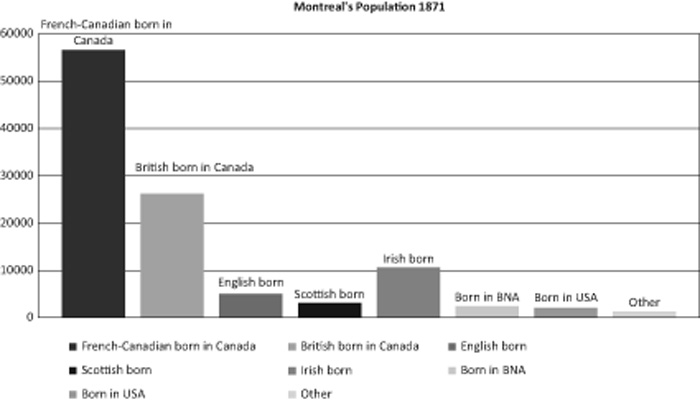
Chart 1.1 Montreals Population by Ethnicity and Place of Birth, 1871.
As illustrated in
The period of study for this chapter begins in 1840, when the provinces of Upper and Lower Canada were united politically. Already by this time, the city of Montreal had a highly developed associational life. The people of Montreal had organized themselves into various groups that catered to the provision of charitable services, cultural enrichment, and the fostering of religious and national identities. Tied to these voluntary associations and institutions were rituals of membership, formal occasions when groups gathered to affirm their identity, and public demonstrations of their belonging to their groups and to society as a whole. In Montreal this translated into meetings, dinners, balls, and parades. A number of these groups appropriated established holidays for their particular use. For instance, the St Andrews Society used St Andrews Day to celebrate Scottish identity, while the masons chose the feast of St John the Evangelist for their annual day. The principal days under discussion in this chapter will be: St Andrews Day (30 November Scots); St Georges Day (23 April English); St Patricks Day (17 March Irish); Orangemens Day (12 July Irish); Saint-Jean-Baptiste Day (24 June French Canadians); the Queens Birthday (24 May); and the anniversary of the Battle of Waterloo (18 June). Many of these groups, even if they were generally more private in their day-to-day operations, would use their day to express their distinctiveness and to do so in a public manner. By occupying public space, marchers made a clear and direct claim to public attention and were situating themselves within Montreals society. In this chapter, those holidays which were celebrated outdoors, in the streets and public squares will be examined.
Font size:
Interval:
Bookmark:
Similar books «Celebrating Canada: Holidays, National Days, and the Crafting of Identities»
Look at similar books to Celebrating Canada: Holidays, National Days, and the Crafting of Identities. We have selected literature similar in name and meaning in the hope of providing readers with more options to find new, interesting, not yet read works.
Discussion, reviews of the book Celebrating Canada: Holidays, National Days, and the Crafting of Identities and just readers' own opinions. Leave your comments, write what you think about the work, its meaning or the main characters. Specify what exactly you liked and what you didn't like, and why you think so.

